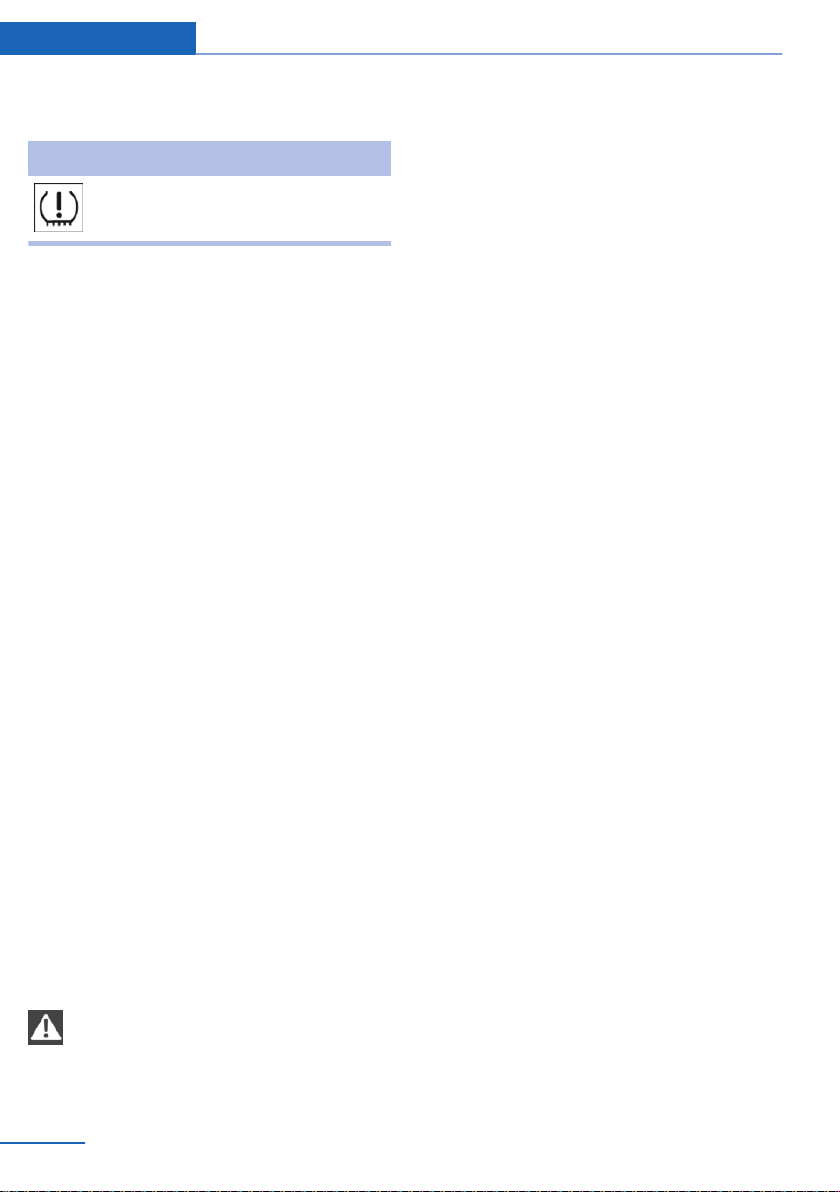Loading ...
Loading ...
Loading ...

In addition, a symbol with a Check Control
message appears on the Control Display.
Symbol Possible cause
There is a flat tire or a major loss in
tire inflation pressure.
Measure
1. Reduce your speed and stop cautiously.
Avoid sudden braking and steering maneu‐
vers.
2. Check whether the vehicle is fitted with
normal tires or run-flat tires.
Run-flat tires, refer to page 296, are la‐
beled with a circular symbol containing the
letters RSC marked on the tire's sidewall.
Actions in the event of a flat tire
Normal tires
1.
Identify the damaged tire.
To do this, check the tire inflation pressure
in all four tires, for instance using the tire
pressure gage of a flat tire kit.
If the tire inflation pressure in all four tires
is correct, the Flat Tire Monitor may not
have been initialized. In this case, initialize
the system.
If identification of flat tire damage is not
possible, please contact a dealer’s service
center or another qualified service center
or repair shop.
2.
Repair the flat tire, e.g., with a flat tire kit or
by changing the wheel.
Run-flat tires
Safety information
WARNING
Your vehicle handles differently with a
run-flat with no or low inflation pressure; for in‐
stance, your lane stability when braking is re‐
duced, braking distances are longer and the
self-steering properties will change. There is a
risk of an accident.
Drive moderately and do not exceed a speed of
50 mph/80 km/h.◀
Maximum speed
You may continue driving with a damaged tire
at speeds up to 50 mph/80 km/h.
Continued driving with a flat tire
Follow the following when continuing to drive
with a damaged tire:
1.
Avoid sudden braking and steering maneu‐
vers.
2. Do not exceed a speed of 50 mph/80 km/h.
3. Check the tire inflation pressure in all four
tires at the next opportunity.
If the tire inflation pressure in all four tires
is correct, the Flat Tire Monitor may not
have been initialized. In this case, initialize
the system.
Possible driving range with a
depressurized tire
The possible driving range varies depending
on the how the vehicle is loaded and used, e.g.,
speed, road conditions, external temperature.
The driving range may be less but may also be
more if an economical driving style is used.
If the vehicle is loaded with an average weight
and used under favorable conditions, its possi‐
ble driving range will be up to 50 miles/80 km.
Vehicle handling with damaged tires
Vehicles driven with a damaged tire will handle
differently, potentially leading to conditions
such as the following:
▷ Greater likelihood of swerving off course.
▷ Longer braking distances.
▷ Changed self-steering properties.
Seite 308
Mobility Wheels and tires
308
Online Edition for Part no. 01402981865 - VI/17
Loading ...
Loading ...
Loading ...